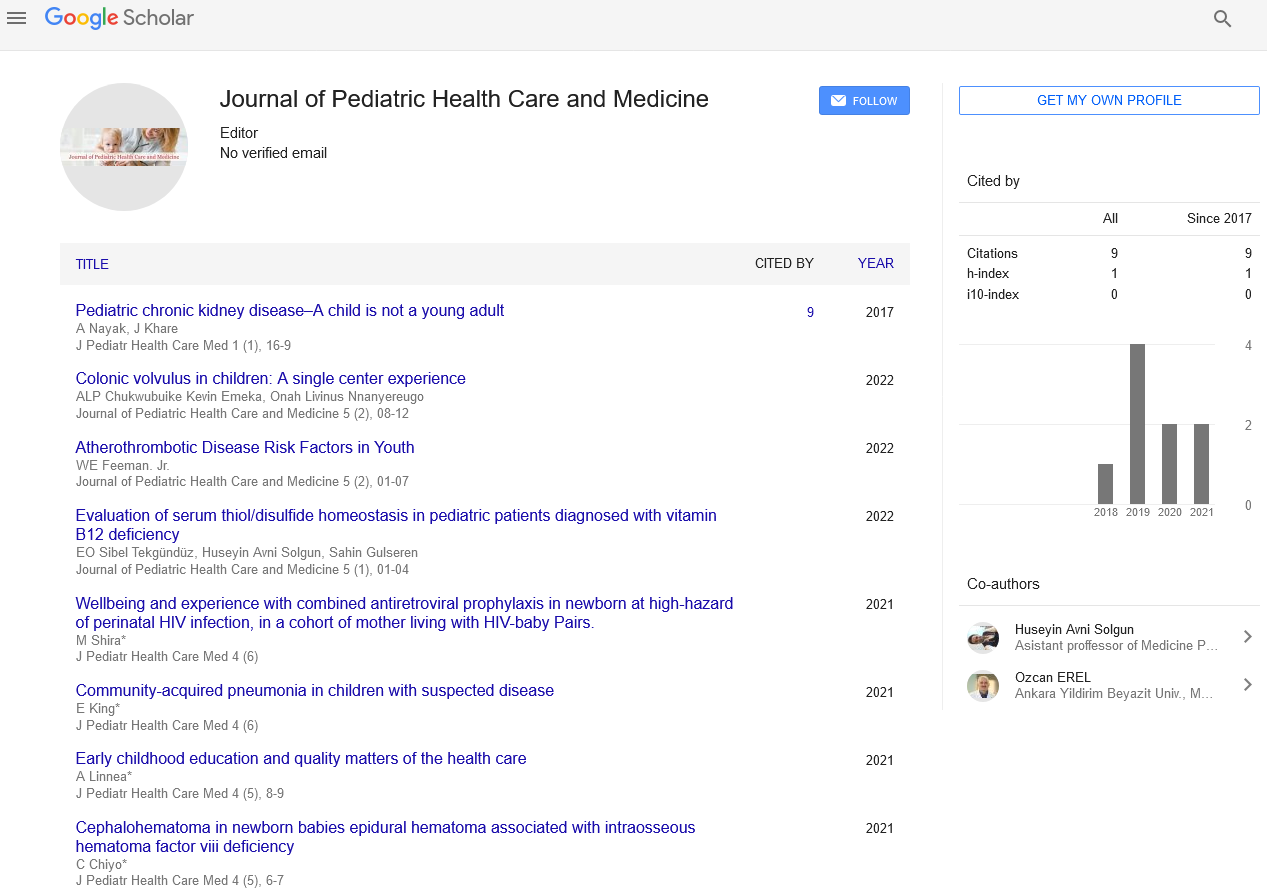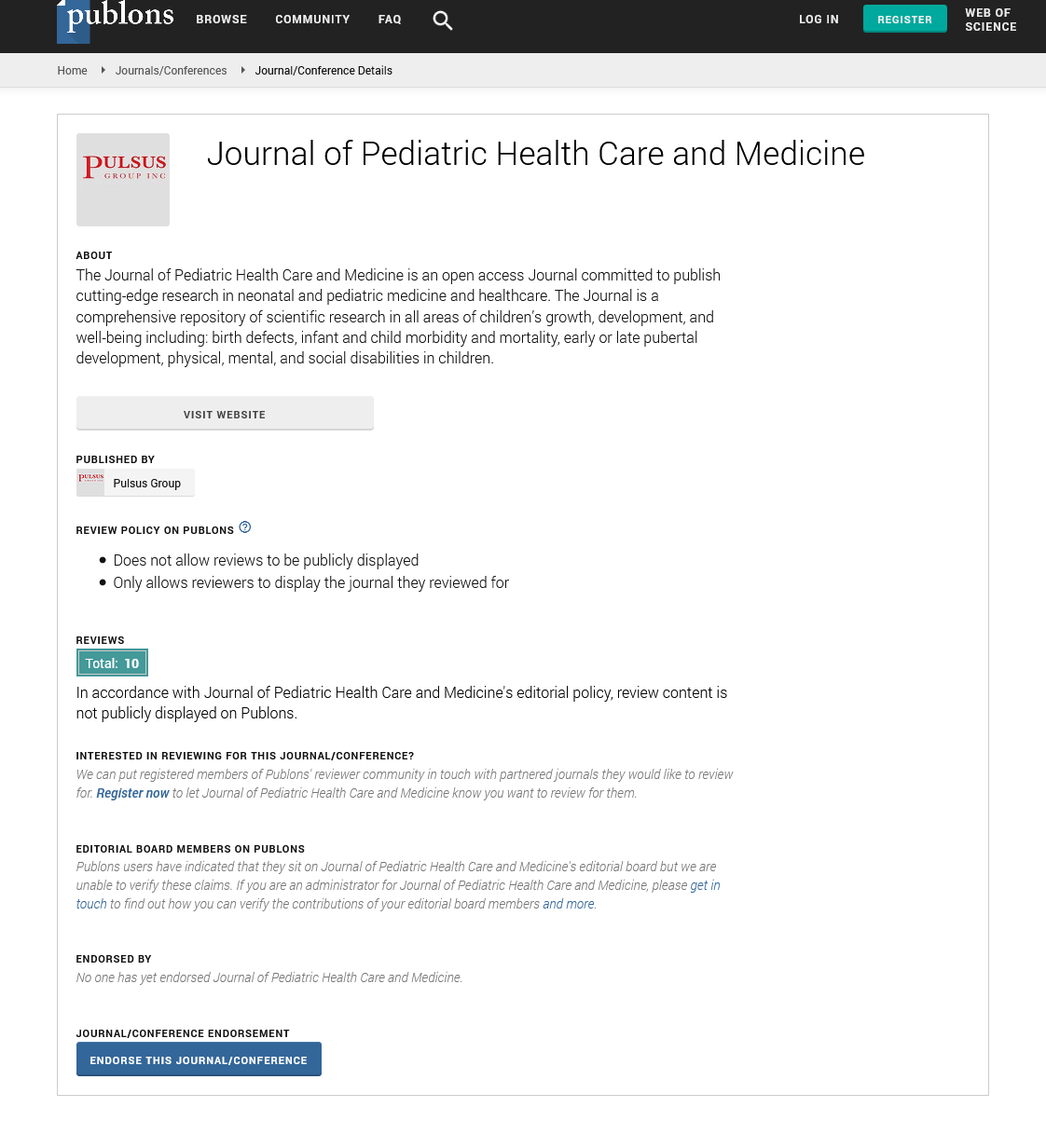Neonatology 2016: Chronic obstructive pulmonary disease of prematurity in preschool children- Pietro Sciacca- University of Catania
Received: 30-Dec-2020 Accepted Date: Jan 07, 2021; Published: 20-Jan-2021
Citation: None
This open-access article is distributed under the terms of the Creative Commons Attribution Non-Commercial License (CC BY-NC) (http://creativecommons.org/licenses/by-nc/4.0/), which permits reuse, distribution and reproduction of the article, provided that the original work is properly cited and the reuse is restricted to noncommercial purposes. For commercial reuse, contact reprints@pulsus.com
Abstract
Bronchopulmonary Dysplasia (BPD) is the most common respiratory disorder that affects chronically preterms with immature lungs. On this base it seems very pressing to investigate the effects of BPD also in preschool children to assess the frequency of respiratory disease and the cardiovascular impact, focusing on functional study of right ventricle whose parameters can be used as an index of bronchopulmonary impairment. The population study take account of 105 premature born between during 2008 in January and 2012 in December with GA<33 week; BW<1800gm. No malformations or surgeries. The echocardiography study has evaluated: L Ventricular Ejection Fraction (EFVS %); Tricuspidal Annular Plane Systolic Excursion (TAPSE); Pulmonary Artery Pressure (PAP); Right Ventricle Isovolumic
Abstract
Bronchopulmonary Dysplasia (BPD) is the most common respiratory disorder that affects chronically preterms with immature lungs. On this base it seems very pressing to investigate the effects of BPD also in preschool children to assess the frequency of respiratory disease and the cardiovascular impact, focusing on functional study of right ventricle whose parameters can be used as an index of bronchopulmonary impairment. The population study take account of 105 premature born between during 2008 in January and 2012 in December with GA<33 week; BW<1800gm. No malformations or surgeries. The echocardiography study has evaluated: L Ventricular Ejection Fraction (EFVS %); Tricuspidal Annular Plane Systolic Excursion (TAPSE); Pulmonary Artery Pressure (PAP); Right Ventricle Isovolumic Relaxation Time (IVRT); Right Ventricle Isovolumic Contraction Time (IVCT). The control group included 30 pre-school children born at term. In 35 cooperating infants, we have evaluated the lung function by the opening interrupter technique (OIT) with the measurement of airway resistance (RINT) (ratio between pressure change and flow). The presence of airway obstruction was detected as a value of RINT higher than 1.20. As results our data have shown: recurrent respiratory infections in 45.7%; upper air way obstruction in 22.3%. We found higher values of RINT in 69/105 (65.7%). The echocardiograph assessment has highlighted higher values of PAP (30 versus 20.7 mmHG) and lower values IVCT (64.75 versus 74.55) in preterm than in the control group, both with a statistical difference (p<0.05). Our data have shown: recurrent respiratory infections in 45.7%; upper air way obstruction in 22.3%. We found higher values of RINT in 69/105 (65.7%). Our results showed a significantly higher incidence of respiratory issues, also before 4 years of age, in ex-preterm subjects than in the general population. The subclinical cardiovascular involvement of right cardiac sections, with an increment of PAP and an alteration of IVCT was significantly related to the incidence of respiratory issues. Right ventricle parameters have also been demonstrated useful for lung disease’s follow-up in preschool children because they are easy to obtain and repeat and need just a bit of cooperation usually obtainable in almost all infants. Our data concerning not only increased incidence of wheezing, but of other respiratory issues contribute to recent definition of “chronic obstructive pulmonary disease of prematurity” as a nosographic entity encompassing: asthma, need for respiratory hospitalization, more frequent bronchopulmonary infections and clinical subclinical pulmonary hypertension with right ventricle impairment that is typical of grown Bronchodisplastic survivors.
Introduction
Chronic obstructive pulmonary disease (COPD) is a serious global health problem, which is increasing in prevalence worldwide, with serious social and economic burdens. The World Health Organization (WHO) estimates that around 210 million people worldwide have COPD. COPD is the primary contributor to mortality caused by chronic lower respiratory diseases, which became the third leading cause of death in the USA in 2008. A chronic inflammatory response to inhaled smoke and other noxious particles results in pathological changes in susceptible subjects with subsequent air trapping, progressive airflow limitation and increasing breathlessness characteristic of COPD. A diminished ratio of forced expiratory volume in 1 s to forced vital capacity (FEV1/FVC) has frequently been used in clinical practice and research to diagnose COPD, with severity based on the level of FEV1. This can, however, lead to confusion and it is now recommended that the term ‘COPD’ only be used in the appropriate clinical (diagnostic) context. Normal lung development: Lung development, which is influenced by numerous mechanical and biochemical factors, commences in utero and continues through various phases to adolescence and early adulthood with the most marked structural changes occurring during foetal life and the first few years after birth. In humans, the lung first appears during the fourth week of gestation and the two lungs can be distinguished as separate organs by 6 weeks. By 17 weeks’ gestation, all conducting airways have formed by branching morphogenesis, with airway wall structure and epithelium being essentially in adult form by 24 weeks’ gestation. Mechanical forces, exerted on lung tissue through alterations in lung expansion, are a major determinant of foetal lung development. Prenatal risk factors for COPD: Irregularities during the susceptible period of foetal lung development may render the adult lung less effective as a gas-exchanging unit and/or increase susceptibility to disease and the effects of ageing. Maternal smoking during pregnancy: While the incidence of maternal smoking during pregnancy has decreased during the past decade, it remains the single, most important, potentially preventable insult to the developing lung and a major cause of sudden infant death, LBW, preterm delivery and intrauterine growth restriction (IUGR).
Conclusion
Given the evidence presented above it is no longer plausible to consider COPD as a disease of old age that is largely restricted to heavy smokers. Instead it has been shown that antenatal programming; intra- and extra uterine environmental exposures and gene–environment interactions all play a major role in determining subsequent susceptibility to diseases such as COPD. As a result of such insults, some individuals are born with low lung function, which then tracks through life, those with the lowest lung function as infants and young children tending to retain this state thereafter. With increasing survival of ever more immature infants, an increasing proportion of the population may be at risk of COPD in the future. This work is partly presented at 9th International Conference on Neonatology and Perinatology on November 28-29, 2016 at Valencia, Spain






